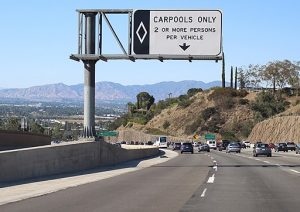If you’ve ever considered purchasing an electric vehicle, chances are you have already given some thought to the advantages of EV ownership. However, you may not even be aware of them all! To help you answer that ultimate question, “Should I buy an electric car?,” we’ve assembled a complete list of all the perks and privileges you can expect from plugging in.
Helping The Environment
Experts broadly agree that electric vehicles are a more climate-friendly option than traditional vehicles. Influenced by this knowledge, a growing percent of the population is rightfully concerned about environmental issues and understands that transportation accounts for nearly 30% of our nation’s greenhouse gas emissions (source: United States Environmental Protection Agency).
As consumers become more informed, it seems reasonable that they would start making purchase decisions that help address climate change. Thankfully, there’s never been a better time to take action that benefits the planet and your own interests. Read on to learn more!

Cost Of Ownership
According to a 2020 Consumer Reports study, EV owners, on average, spend 60% less on fuel compared to owners of internal combustion engine (ICE) vehicles. But there are more, less obvious, savings in EV ownership when it comes to vehicle maintenance.
A report published by the U.S. Department Of Energy claims EV drivers enjoy a $.04 per mile savings compared to their ICE driving counterparts. That doesn’t seem remarkable until you do the math and realize you could save nearly $10K on maintenance alone during the life of your vehicle. Factor in the time you save skipping routine service appointments (the first scheduled service on some EV models doesn’t come until they reach 80K miles!), and the “ease of ownership” becomes almost as compelling as the “cost of ownership.”
Why this is has much to do with the relative simplicity of electric vs. internal combustion vehicles. It’s typical for an EV to have fewer than 100 moving parts, while ICE vehicles commonly number moving parts in the 1000s. This translates to more friction, wear, and ultimately, breakdowns and repairs for the latter. Additionally, as the mileage on your gas vehicle climbs above 150K, the cost of repairs tends to escalate, whereas EV maintenance costs typically remain even.
More good news for EV owners is an invigorated interest in finding the next generation solution for car batteries that last…forever? Researchers at the University of California, Irvine, for example, have been experimenting with materials that allow batteries to be recharged more than 200,000 times with zero degradation.
Relief For Range Anxiety
One of the primary, and most legitimate, reasons for not purchasing an EV has been the lack of charging stations available for drivers who would like to use their vehicle for something more than a daily commute or local errands.
Luckily, even that large-scale problem appears to be finding large-scale solutions as more auto makers and consumers commit to electric. President Joe Biden’s $1 trillion bipartisan Build Back Better infrastructure bill, passed in Nov. 2021, earmarked $5 billion in state-administered grants for EV charging stations nationwide.
Private industry is also committing resources to solving the range anxiety problem. This year, General Motors will begin a new community charging program to install up to 40,000 Level 2 EV chargers across the U.S. and Canada. As part of its effort to build out its Ultium Charge 360 ecosystem, GM and its dealers will work together to expand access to charging in local communities including underserved, rural, and urban areas. This initiative is part of GM’s recently announced commitment to invest nearly $750 million to expand home, workplace and public charging infrastructure.
Even historical EV enemies seem to be coming around. Shell Oil, for example, expects to be operating more than 500,000 charge points by 2025. Indeed, the opportunity to serve consumer-driven demand for fast charge stations is seen as a huge opportunity for corporations to reinvent and reinvigorate a segment of their businesses that is, ironically, going the way of the dinosaur.
Tax Credits
While most EV pricing is still at the upper end of the buying budget for middle-class shoppers, federal and state tax credit incentives help level the playing field between standard gas and electric vehicles. In fact, electric and plug-in hybrid cars purchased new in or after 2010 may be eligible for a federal income tax credit of up to $7,500. The specific amount of the tax credit depends on the capacity of the vehicle’s battery, but as of this writing there are more than 170 models that qualify for a discount of at least $3,000.
To see what kind of tax credit the vehicle you’re considering qualifies for, visit the Department of Energy’s fuel economy information site. The site is regularly updated to include all available makes/models and provides specific dollar amount tax credit for each vehicle.
State level incentives also exist, but can be considerably more confusing to interpret and apply for. In California, for example, there are a whopping 134 laws and incentives related exclusively to EV vehicles. Many of these are specific to the county you reside in and offered by the energy company that services the home or work place where you charge your vehicle.
However, there are state rebates that equal several thousand dollars for qualifying residents. Eligibility varies state to state, but is typically available to buyers within a certain income range, buying specific electric vehicles, who have not previously taken advantage of the rebate.
The best source for state-specific data on rebates and incentives is the Alternative Fuels Data Center, also run by the U.S. Department Of Energy.

Crush Your Commute (HOV Lane Access)
If your daily work or school commute is a slow, painful crawl through highway hell, one of the most attractive perks of electric ownership is single-driver access to high occupancy vehicle (HOV) lanes. Imagine breezing past a sea of snarled traffic and cursing commuters to arrive on time and completely calm at your office or university. According to the U.S. Department Of Energy, there are 8 states, including notoriously jammed California and New York, that give EVs privileged access to HOV lanes.
The Fun Factor
Still not convinced? The most overlooked advantage of EV motoring is also the one that is most impossible to ignore after your first test drive. How much more zippy and fun to drive are EVs compared to the sluggish performance of even luxury level ICE autos? The answer is very. While you won’t notice much difference at top end speeds, off the line–where it matters most to daily drivers–even lower priced electrics out-accelerate and out-perform their gas counterparts routinely. It’s no surprise that the fastest 0-60mph production car in the world is, drumroll please, a Tesla.
Want to learn more? Contact local dealers to test drive a wide range of EVs including the Chevy Bolt and the Nissan Leaf.